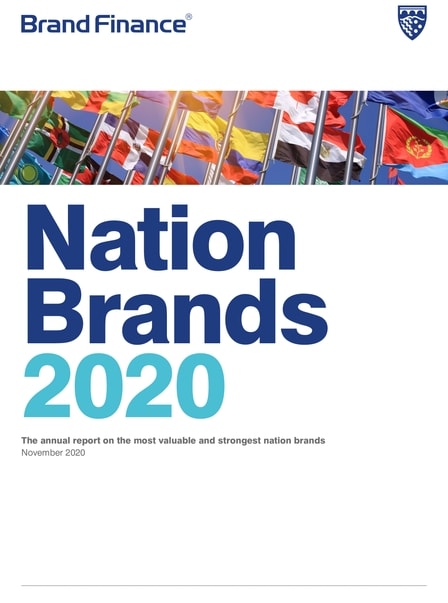Gain expert insights on the role of nation branding in the realms of tourism, investment attraction, product quality, and GI (geographical indication) products.
This article was originally published in the Brand Finance Nation Brands 2020 report.

Nations as Tourism Brands - Jeremy Sampson

Managing Director,
Brand Finance Africa
It is not that long ago that brands and branding were seen as the sole preserve of the FMCG brigade. Not anymore. Today everything is brandable from people to countries. And that means a value can be put on everyone and everything.
Tourism is a major potential source of income for all countries, regions, and cities. But competition is intense and so it is essential to ensure all touchpoints of the brand are aligned to provide the best possible experience.
Africa is a patchwork quilt of 54 countries, with a plethora of different cultures, currencies, and local languages. This fragmented geography, slowly harmonising, remains an obstacle to both easier trade and tourism.
Another issue is the perception that Africa is a long way from everywhere, which is far from the reality. South Africa remains the gateway to the continent, with Johannesburg the hub. Today, everyone has to fight for a share of the tourism wallet. Remember: it’s the brand, stupid!
Attracting Green Field Investment - Laurence Newell

Managing Director,
Brand Finance Americas
Nation branding applies widely-used marketing concepts to countries in the interest of enhancing their reputation – principally among institutional investors – and why not?
Corporate marketing has created immense value through brands, based on a clear understanding of certain consumption patterns and how brands meet them. Much like consumers, investors are predictable, and nation brand managers need to study their needs.
Central to positioning a nation brand is a clear understanding of what drives investor decision-making.
Having had the opportunity in the past to help define brand strategy for the investor relations arm of Brand Mexico, critical to success in that project was an understanding of what was most important to investors, and what drives their motivation to select a nation over another.
Focusing on measurement and collecting the right data going forward is a competitive advantage in itself, and knowing what not to measure can be as important as understanding what should be measured. Certainly, the closer a metric is to income – or in this case, investment – the more seriously it will be taken by management.
National Quality Mark - Samir Dixit

Managing Director,
Brand Finance Asia Pacific
Every country aims to drive some form of competitive advantage for their products through the country’s brand image. Some use tourism advertising, some FDI campaigns, and some global events such as the Olympics. But all these drive the “inbound”, which in an economic context is equivalent to focusing on imports only. What about exports – the “outbound”? After all, most countries have a better chance to ride out an economic slump due to their export concentration.
In the international marketplace, consumers have a much wider choice of products from different countries. They seek higher assurance of quality than what they simply get through the place of origin. Consumers need a warranty and assurance from governments about the quality of exported products. And the solution simply lays in a strong “National Quality Mark” which endorses quality and authenticity.
Due to the efforts of a national mark program called “Vietnam Value”, Vietnam’s processed food industry now contributes upwards of US$17 billion of the country’s exports. The apparel industry makes up over US$22 billion of exports. These economic contributions are absolutely crucial for Vietnam’s overall growth and would not have been entirely possible without the concentrated efforts by Vietnam’s government.
A well-managed national quality mark is key to nation brand success and doing it right can bring great benefits.
Opportunities for GI products - Ruchi Gunewardene

Managing Director,
Brand Finance Sri Lanka
By virtue of a country’s bio-diversity, climate conditions, heritage and cultural diversity, many unique commodities and products are made available that generate appeal among customers in other countries. Whilst these are often traded, there is an opportunity for greater value creation by protecting their source of origin, so that similar products from another region cannot unfairly exploit the reputation that has been amassed.
Every nation in the world has such valuable intangible assets. These exported products add to the perceptions around a nation’s brand. However, a lot of work needs to go into protecting, regulating, and managing them in order to create an effective global marketing strategy and extract the hidden value.
Ceylon tea is a good example of a country of origin product that has survived for 150 years after it was first exported to the UK. Although it still retains the perception of being a good quality tea, it is now under pressure to use modern marketing and branding techniques to stay relevant in these rapidly changing times.
Branding strategies centring on the geographical origin of a product is a key basis for differentiating them from commodity products. And the use of such “geographical indication” (GI) can involve a range of unique quality characteristics associated with a particular location.

